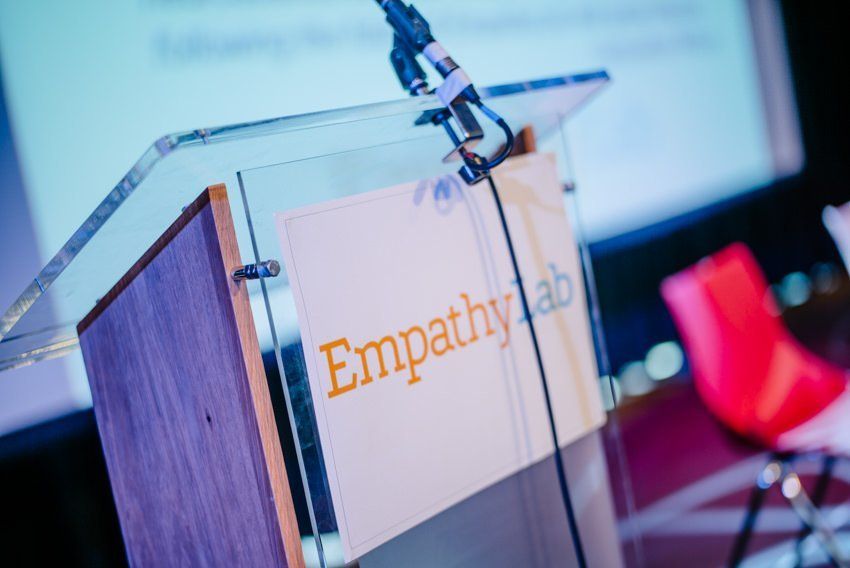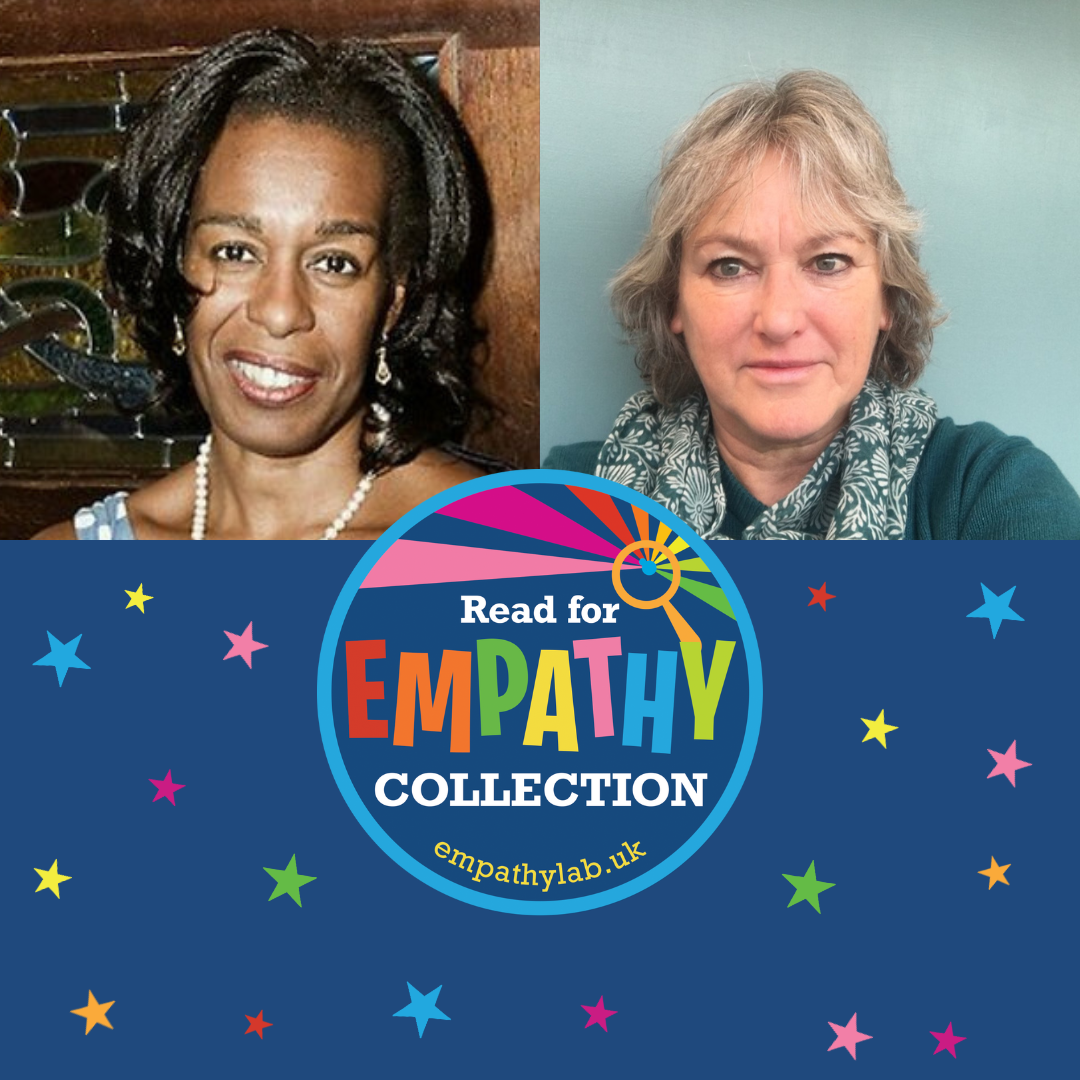EMPATHY IS AN INHERENTLY CREATIVE MECHANISM
- By EmpathyLab
- •
- 31 Jan, 2017
- •

My attendance at EmpathyLab’s Think In at the South Bank Centre was entirely serendipitous; I had checked the venue website about another event, but the word ‘empathy’ caught my eye. My immediate response was ‘I’ve got to go to this’. And so, I did….and so glad I did! To be surrounded by a group of such experienced and socially engaged individuals felt like a masterclass in how to change the world. The opening talks by Roman Krznaric and Sue Palmer were inspiring and insightful, followed by group work that was stimulating and thought-provoking.
In recent years, I have developed an increasing interest in empathy and compassion, becoming aware of such social activism as Karen Armstrong’s Charter for Compassion campaign and Krznaric’s groundbreaking work on empathy, including the concept of outrospection. It is heartening to witness this growing awareness of otherness, although perhaps not surprising when considered within the context of an increasingly individualized society.
Unlike most Think In participants, I do not have a professional background in work with children or storytelling, but do have a strong interest in psychosocial research. In addition, my experience of developing listening skills within a student counselling triad offered a new, deeper perspective of empathy. This highly focused process challenged and altered my understanding of it, as I became more aware of subtle aspects previously not appreciated; this included the fact that empathy is essentially an embodied mode of being, rather than merely a frame of mind, and that my capacity for it was dependent upon my overall state, such as whether or not I was feeling tired. Likewise, my journey along the spiritual path of Yoga during the last six years has fuelled my commitment to developing greater empathic understanding of others. When everything is fine and dandy, this has felt relatively easy. However, negotiating life’s inevitable vicissitudes, both great and small, has highlighted the real challenges involved in maintaining an open heart and mind at all times. I fail frequently, but try constantly.
The prospect of increasing empathy amongst children through storytelling feels at once logical yet radical, simple yet complex. Empathy is an inherently creative mechanism. Like forgiveness and gratitude, it implies movement and the capacity to traverse a gap from one’s felt experience to one’s thoughts, including from self to other; finding the familiar in the foreign. Storytelling, therefore, makes perfect sense as a means by which to facilitate and foster these psychic leaps, in this case, into imaginary worlds. Is there a link between the mechanism of building relational bridges through empathy and losing oneself in books with other processes of self transcendence and escapism, such as digital virtuality, alcohol, drugs, and religious or spiritual worship, I wonder? If so, could this be relevant to EmpathyLab’s research and development programme?
As social creatures, embedded within a relational matrix from birth, we have, as Krznaric identifies, both innate empathic and anti-empathic potentials. In turn, these are subject to external influences that support and challenge. From I-centric marketing slogans to rigid, non-dialogic political discourse and governments acting with impunity, we are habitually bombarded with powerful messages in support of individualized thinking that effectively oppose the discourse of otherness. At the Think In, the influence of capitalism was astutely noted. I wonder whether establishing key factors that enable empathy to exist and thrive, along with those that hamper it – empathic and anti-empathic influences – might be a fruitful exercise in creating a social map of its natural habitats.
EmpathyLab identifies, and aims to address, a social trend that is well documented, namely, that empathy amongst children is declining. It is clear this has real long-term implications. Empathy underpins all societal issues. A limited capacity to consider the other – from their perspective – leads to behavior and actions that negatively impact both current and future generations.
I am thrilled to have stumbled upon EmpathyLab’s unique vision, humbled by the passionate, talented individuals I have met so far and excited to be a (tiny) part of it through the writing of this piece. I look forward to the next event!
Find out about the Top Ten Messages from our Think In and our next steps.
Read the Think In crowd-sourced recommendations for books that helped you understand someone else better.
Join our network on LinkedIn – we’d love you to be part of the conversation.
Photo credit: Dan Chippendale

The collection consists of 65 books for 3-16 year olds, each chosen for its unique contribution in building young people’s empathy.
The primary collection for 3-11 year has 40 books; the secondary collection features 25 books for 12-16 year olds.

I am very fortunate to have been on the Read for Empathy booklist judging panel over the past few years.
I’m also a practising classroom teacher so I would like to consider how the books on the list can influence what happens in a school.
Firstly, along with many other schools, reading aloud is an important part of our school day, every day, almost without fail. All the teachers at my school are aware of the EmpathyLab booklist, and often use it as a basis for choosing their next class read. Knowing that the books touch on important aspects of our children’s lives is key; we all understand how important representation is in stories. These are books that make a difference, that lead to passionate discussions in the classroom and can actually influence children’s behaviour .
The booklists become increasingly valuable. We have a couple of hundred empathy texts at our school – they are there on merit. Staff often refer to previous lists if there as a particular aspect of empathy that they want to include or share with the children.
Our Year 6 Reading Champions often seek out picture books from the list to take in to KS1 and Reception when they read stories, so we already have the next generation educating each other about the importance of empathy. I love the fact they often meet beforehand (they tend to work in twos) to discuss what questions they might want to ask the children once the story has been read. After each booklist is released, they also spend several of their Friday recommendation slots in assembly talking about a couple of the books. We have parents in on our Friday assembly so it’s a great way to share the texts with them and help raise their awareness of our work.
We often use the books as our teaching texts for English, partly because they encourage excellent writing but also because they provide a fantastic opportunity for our pupils to develop their empathy skills. The Wild Robot by Peter Brown, Miraculous Journey of Edward Tulane by Kate DiCamillo, Freedom by Catherine Johnson, Eyes that Kiss in the Corners by Joanna Ho and A Street Dog Named Pup by Gill Lewis are all books that have made in into our English curriculum as a result of being on one of the Read for Empathy booklists. Well, that’s not strictly true - Edward Tulane was there before that as it’s one of my favourite ever books, but you hopefully take my point.
Reflecting on our empathy journey over the past few years, I’ve also found that the more books children read that address empathy, where they can relate to the characters and their choices, the more books they want to read. It’s almost a virtuous circle. Many begin to realise that such books can empower them to think about situations.
For example, as soon as we finished A Street Dog Named Pup last year, several of them immediately wanted to read other books by Gill Lewis. Because empathy is a thread that runs through much of her work ( Gorilla Dawn , Moon Bear , The Closest Thing to Flying and so on). Thanks to EmpathyLab's lists, I was able to point them in the direction of several other books, by her and others.
I think we agree that teaching children about empathy and providing them with opportunities to develop it is one of the most important gifts we can give them as adults. The fact that empathy has gone from being something that schools sort of understood a few years ago to being something that has got an increasingly solid evidence base is crucial.
There’s always been anecdotal evidence that reading stories is important for children and that it can change how they think but now that’s backed up with research. The empathy revolution (and it is a revolution) is only going to pick up more momentum over the next few years as the need for it becomes ever more apparent. Working in schools and in the world of children’s books means that we’re in the front line. There’s nowhere else I’d rather be.
